‘Tourist Gaze’ and Society
Kiyomi Misaki is a PhD student in Asia Institute at the University of Melbourne, researching Japanese society and culture through fieldwork and Action Research.

The collection of the Commercial Travellers’ Association (CTA) provides various images correspondent with historical events such as the Great Depression, the World War and the period after the war. Across the whole collection, beautiful scenery and leisure activities drew my attention and as an international student, an idea came into my mind: what do these images tell about society in Australia?
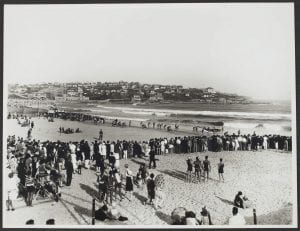
The perspective of tourism may be beneficial to understanding interrelations between images and society. According to Urry & Larsen (2011), a ‘tourist gaze’ enables tourists to see physical places as interesting or beautiful but it can also illuminate mundane social practice that everyone overlooks. To find out how the images which are related to tourism changed with the times, I set the keyword as ‘recreation’ in the catalogue and found images described as ‘Cities, ports, recreation’ and ‘outdoor scene (sport, recreation, etc.)’ in the collection. Most were of New South Wales (NSW) between 1932 and 1952, and although it may be insufficient to tell something about Australia with one district, the photographs reveal different characteristics over time. To locate these pictures in relation to historical events, I referenced the website of the National Museum of Australia.

In 1932, Australia suffered the Great Depression and with its highest impact experienced as 32% unemployment. One event which represented development and economic success that countered the suffering of these years was the opening of the Sydney Harbour Bridge (Figure1). Images take during this period (1932-1933) are mainly landscapes but include a wide variety of outdoor scenes in every season from river fishing, surf bathers in summer to horse sledding in winter. It seems that even during a Depression, people enjoyed leisure in each season in an economical way. Moreover, two images of Bondi beach in 1933 show many people flocking to its sandy foreshore in summer, establishing what is now known all over the world as a symbolic attraction of NSW (Figure2 and 3).
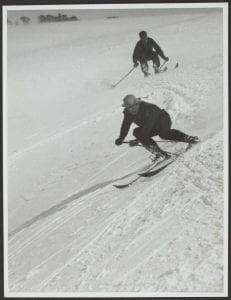

Images between 1934 and 1939 differ from those of 1932-1933, the scenes are more active and modern, as if people spend more time and money on leisure activities. Several photographs include surfing as well as others of skiing, yachting, horse riding and horse races (Figure4,5,6). Around this period, the government was politically stable as the United Australia Party (UAP) under Lyons won federal elections in 1934 and 1939, and economically, the country experienced a slow recovery from the Depression. By the start of the Second World War unemployment was down to 11%. Spending time and money on more expensive outdoor leisure activities than the previous period shows an interrelationship with economic recovery.
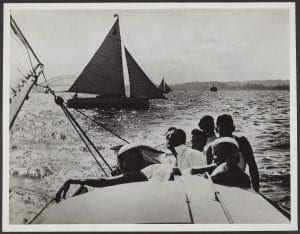
Between 1946 and 1948 the photographs depict a large number of people in a huge stadium or cricket pavilion, and a car park full of cars related to a horse race (Figure7 and 8). The only image in the 1950s ‘The McWilliam’s Wine £2,500 Golf Tournament’ in 1952 describes ‘possibly a world’s record golf attendance’ (Figure9). Each of these pictures show Australians enjoying spectacle as leisure activities in post-war development, as if large-scale and consumption-oriented leisure and possession of cars best represents post-war modern society. Indeed, after the war, the Australian government increased support for public housing, research and development, and higher education, and it played a leading role in founding United Nations. This burgeoning modern society contributed to both domestic and international needs and built a basis for a consumerism that seems to have sustained prosperity in this country.
While observing these recreation scenes in NSW from 1932 to 1952, they gradually change from relaxing to active leisure activities and to extravagant consumerism following historical events such as the Great Depression, economic recovery and post-war development. The ‘tourist gaze’ upon these scenes has been a way to understand how recreation builds and exemplifies interrelations with other facets of Australian society.
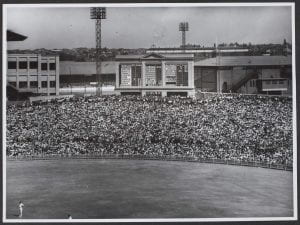

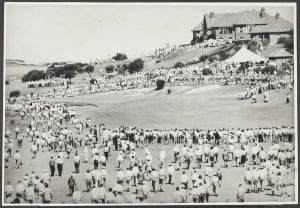
References
National Museum of Australia. National Museum of Australia- Defining Moments the Great Depression. Retrieved 10 September 2020, from https://www.nma.gov.au/defining-moments/resources/great-depression
National Museum of Australia. National Museum of Australia- Timeline. Retrieved 10 September 2020, from https://www.nma.gov.au/defining-moments/defining-moments-timeline
The Commercial Traveller’s Association. The Commercial Traveller’s Association (CTA). Retrieved 10 September 2020, from https://gallery.its.unimelb.edu.au/umblumaic/imu.php?request=search
Urry, J., & Larsen, J. (2011). The tourist gaze 3.0 (3rd ed). SAGE.
Leave a Reply